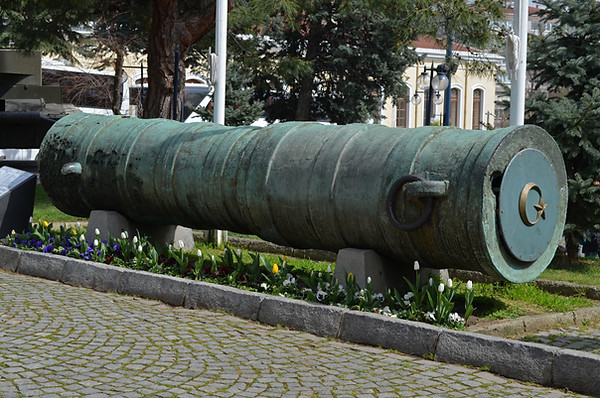Theodosian Walls

The Theodosian Walls are among the most impressive monuments of Late Antiquity. These land walls protected Constantinople for centuries while the other great cities like Rome, Antioch or Alexandria were sacked. The Theodosian Walls consists of an inner wall, an outer wall with an inner terrace, and a wide moat, with a second outer wall in front of it. Attackers first had to cross the moat and its wall, while being fired upon from both the outer and inner walls – the towers of the inner walls were equipped with ballistae and catapults. Even if some attackers were able to scale the outer wall, they would then be trapped on the inner terrace, facing a taller wall reinforced by huge towers. As Constantinople lies on triangular peninsula surrounded by the sea on two sides, its land walls were frequently the main defenses required. The triple line of defense of the Theodosian Walls, then, helped make Constantinople virtually invulnerable for centuries.
The Theodosian Walls are now around 5.5 kilometers long, but once were longer when they continued through the Blachernai. The walls and towers were constructed with limestone blocks divided at intervals by layers of red brick with a core of mortared rubble. The inner wall is reinforced by 96 polygonal and rectangular towers. The height of the inner walls is around 10 meters above the outer terrace and as much as 13 meters above the ground within the city. The wall is around 4.5 meters thick, with tower roughly 75 meters apart with a height around 19 meters. The inner terrace is around 16-21 meters wide. The outer wall also has towers at regular intervals and is around 9 meters above the outer terrace, with walls as much as 2 meters thick. This wall, reinforced by relieving arches supporting the walkway, had an addition 92 towers. The outer terrace is around 20 meters. The moat is around 20 meters wide, with a maximum depth of 7 meters. In some towers of the outer wall, there are posterns giving access to the outer terrace. The Theodosian Walls have six main gates and several secondary posterns.
The first walls of Constantinople were built by Constantine I following his victory at the Battle of Chrysopolis in 324. While these walls were able to defense the city from the Goths following their victory at the Battle of Adrianople in 378, it was becoming clearer that Constantine’s city walls were inadequate. Furthermore the population had grown to the extent that new development of the city began to take place outside of the walls. Early in the reign of Theodosius II (408–50) the need for better defenses at Constantinople became abundantly evident following the Sack of Rome by the Goths in 410.
The walls were completed in two phases during the reign of Theodosius II (408–50). The first construction phase, ordered by the regent for the young Theodosius II, the Praetorian Prefect Anthemius, was completed around 413. It is possible, though, that a new line of walls was first conceived by Theodosius I, as the construction of the Porta Aurea (“Golden Gate”) was completed by the time of the emperor’s victory procession in 391. It consisted of a single wall and a series of towers located approximately 1.5 kilometers west of the Walls of Constantine and stretched around 6.5 kilometers from the Golden Horn to the Propontis (Sea of Marmara). The prefect Cyrus Panopolites built or extended walls along the Marmara and the Golden Horn in 439. It seems that this wall was extensively damaged as a result of severe earthquakes of 437 and 447. As a result, repairs were quickly made under the direction of the Praetorian Prefect Constantine. The work was accomplished with the help of the urban population in two months, partly because the Huns occupied the Balkans during the period and were a direct threat to Constantinople itself. The scale and speed of this remarkable feat is commemorated by Latin and Greek inscriptions at the Rhegium Gate (Turkish Mevlevihane Kapısı). This was not merely a reconstruction of the walls, but rather consisted of extensive enlarging and reinforcing of the walls, by adding an outer wall and a moat. This would result in Constantinople having the most elaborate and complex urban fortifications in the ancient world. These walls, though, did have their weak points. The outer wall seems to have ended a short distance north of the Charisios Gate, while the moat seems to end just south of the Charisios Gate. The most vulnerable section of the walls, which was known as the Mesoteichion, seems to have been around the valley of the Lykos River. The addition walls, later constructed around Blachernai, were also a vulnerable section of the land walls.
Starting in the late 6th century, the Byzantine Empire entered a period of crisis which would soon put the city’s defenses to the test. Constantinople faced its first major threat during the Avar and Persian siege in 626. The Avars, who bombarded the Theodosian Walls with siege engines, were unsuccessful in their attacks, partly due to their inability to coordinate with the Persians and their fleet. The Arabs, who had successfully conquered the empires’ eastern provinces, besieged Constantinople in 674 and 717-718. While these were a much greater threat as the Arabs had both an army and a fleet, they were ultimately unsuccessful as well. Following the second siege of the city, the Byzantine Empire slowly began to recover, resulting in Constantinople no longer being directly threatened. However another army appeared before the walls of Constantinople in 813. The Bulgarian Khan Krum (c. 803-814), who had just crushed the Byzantines in battle, killing Emperor Nikephoros I (802-811), brought his armies before the Land Walls but found that there was very little that he could do.
The land walls were repeatedly damaged by earthquakes, and thus required repairs. These repairs are often commemorated by various inscriptions on the Theodosian Walls. One such inscription, located at the Rhegium Gate, records repairs made Spatharios Narse, on initiative of Justin II (565-578) and his wife Sophia. Furthermore, additional walls were later constructed around Blachernai in order to bring forward the walls from the original line of the Theodosian Wall. The first addition to the land walls was made during the reign of Heraclius (610-641) following the Siege of Constantinople by the Avars and Persians in 626. Justinian II (685-695) and Anastasius II (713-715) made repairs of the walls in preparation for an attack by the Arabs. Following an earthquake in 740, Leo III (717-741) and his son, Constantine V (741-775) repaired the walls, as indicated by an inscription on Tower 25. A series of earthquakes during the reign of Basil II (976-1025) required repairs, which are commemorated by inscriptions on Tower 1, Tower 36 and Tower 50 at the Rhegium Gate. During the reign of Manuel I Komnenos (1143-1180) a new wall was built to better secure the Palace of Blachernai, as it was the primary imperial residence at the time. In addition, the walls were extensively repaired during his reign. The walls were neglected following the Latin occupation of Constantinople in 1204, and while the Palaiologan dynasty restored Byzantine rule in 1261, they generally lacked the financial resources to maintain the walls on a regular basis. Nonetheless both Michael VIII Palaiologos 1259-1282) and his son Andronikos II (1282-1328) had repairs made to the walls. The brief siege of Constantinople in 1422 by Sultan Murad II (1421-51) revealed the imminent threat of the Ottomans. Accordingly, John VIII (1425-48) had the walls extensively repaired, as multiple inscriptions, including some recorded but now lost, record.
The Theodosian Walls played a prominent role during the Siege of Constantinople in 1453 by Mehmet II (1451-1481). The accounts of the siege and subsequent sack of Constantinople vary quite widely, making it difficult to precisely determine its exact details. The Ottoman army, which began to besiege Constantinople in early April 1453, bombarded various sections of the walls with large canons cast by Urban, an engineer possibly of Hungarian origin. While significantly damaging the walls in certain sections, the defenders of the city were able to repeatedly fight off enemy advances. The Ottomans also failed in their attempt to attack the walls with a siege tower as well as multiple attempts at mines under the walls. During the siege, the land walls were defended by the Genoese Giovanni Giustiniani Longo, who had brought 700 soldiers and offered his services to Constantine XI in early 1453. He withdrew from the walls when he was wounded on May 29 leading many Genoese soldiers to panic around the Pempton Gate. The ensuing chaos allowed for Ottoman soldiers to overwhelm the fortifications and gain access to the inner wall. According to tradition, Constantine XI was killed in the final assault of the city. On the same day, a small band of Ottoman soldiers were able to slip through Kerkoporta Gate (location uncertain), while the Janissaries breached the walls around the Gates of St. Romanos and Charisius. Mehmet II made his triumphal entry into Constantinople through the Charisius Gate. Later known as Edirnekapı, this gate was extensively restored by Bayezid II and became a ceremonial entrance for Ottoman sultans. Other sections of the Theodosian Walls were extensively damaged during the siege, which were subsequently restored by the Ottomans.
In 1458, a citadel known as Yedikule (“Seven Towers”) was constructed behind the Golden Gate. As earthquakes repeatedly damaged the city walls, multiple repairs were made during the Ottoman era. Towards the end of the Ottoman era, they were increasingly neglected and sections of the walls collapsed. In 1886, the Xylokerkos Gate, which had been bricked up during the Byzantine era, was opened up again, after which it became known Belgradkapı (“Belgrade Gate”). At the beginning of the 20th century, plans to demolish the Theodosian Walls in order to modernize the city following European models were rejected due in part to the intervention of Turkish and foreign archaeologists. A section of the walls near the Sea of Marmara was demolished during the construction of the railway built in 1871. In the 1950s, other sections of the walls were demolished to build major roads like Millet Caddesi and Vatan Caddesi. The walls, though in ruins in many sections, were included in the UNESCO World Heritage Sites of Istanbul in 1985.
The remains of several sections of walls are located in the region of Blachernai, which are often claimed to represent walls dating to the Theodosian period or even before. The original line of the Theodosian land wall in the area has been debated; it is only certain that it once ran behind the Church of Theotokos Blachernai. A section of limestone wall, southeast of the present Church of St. Demetrios Kananou near the Golden Horn, is the most likely candidate for a surviving section of the Theodosian Walls. As it was incorporated into the sea wall, it might have survived the destruction of the Theodosian land wall.
See also Golden Gate, Walls of Blachernai


Plan by Richard Bayliss
Tower 1 and Mermerkule
Inscription of Basil II and Constantine VIII from Tower 1
+ Πύργος Βα|σιλείου καὶ Κωνσταντίνου πιστῶν ἐν X(ριστ)ῷ α(ὐ)τ|οκρατόρων εὐσεβεῖς βασιλεῖς Ῥωμέων +
“Tower of Basil and Constantine, faithful Emperors in Christ, pious Kings of the Romans”
Tetragram from window of Tower 1
Ἰ(ησοῦ)ς Χ(ριστὸ)ς ν(ι)κᾷ
“Jesus Christ conquers”
First Military Gate
Christogram over gate
Inscription of Romanos (II or III) from Tower 4
+ Πᾶσι Ῥωμαίοις μέγας δεσπότης ἤγειρε Ῥωμαν | ὸς νέον ὁ παμμέγιστος τόνδε πύργον ἐκ βάθρω(ν)
“Romanos, the Great Emperor of all the Romans, the most Great, erected this tower new from the foundations”.
Inscription from the eastern side of Tower 4
+ ἐκτ(ί)σθ(η) ὁ πύργος οὗτος δια...| κελαρίου
This tower was built by Kelarios (?)

Inscription fragment between Towers 4 and 5
At Istanbul Archaeological Museums
ΑΥTOKPATOP
From Ahunbay
Inscription fragment (of Leo and Constantine) from Tower 5
Λέων] καὶ Κωνσ[ταντῖνος
Leo and Constantine
Lost inscription of Leo III and Constantine V from Tower 7
+ Λέων σὺν Κωνσταντίνῳ σκηπτοῦχοι τόνδε ἤγειραν πύργον τῶν βάθρων συμπτωθέντα +
“Leon with Constantine, wielders of the scepter, erected from the foundation this tower which had fallen”
Inscription from the Golden Gate
Haec loca Theudosius decorat post fata tyranni.
Aurea saecla gerit qui portam construit auro.
“Theodosius decorates this place after the death of a tyrant.
He who builds the gate with gold rules the golden age”.
Relief Fragments at Istanbul Archaeological Museums from the Golden Gate
Late Antiquity
Ottoman inscription from Tower 11
Almighty Allah willed it
1168 (1754-1755)
Inscription of Sultan Ahmed III from Yedikule Gate
The foundation of the reign of Sultan Ahmed Khan III, which shows all his glory and grandness, has been reinforced during his just reign.
As he has been the shelter for the country and the nation, a sanctuary for the religion and the state, every part of our land has been protected from the traps of the enemy.
Many other works were created during his reign; for example, the walls of Istanbul have been repaired and became the apple of eye.
Upon his order Grand Vizier Ibrahim Pasha made sure it was repaired and done so beautifully.
Particularly this dervish lodge became more splendid than all the others by the order of the Sultan, the ruler of the seven climates.
Vehbi, Utarid, recorded the repair with these words: “Yedikule Kapısı (The Gate of the Castle of the Seven Towers) now resembles to the arch of seven heavens. 1137 (1724-25)

From A. van Millingen
Lost Inscription of John VIII Palaiologos from Outer Tower 12a (1443/44)
+ Ἰω(άννου) ἐν Χ(ριστ)ῷ | αὐτοκράτορος | τοῦ Παλαιο|λόγου τοῦ |͵ςϡΝΒ ἔ|τους +
+ “(Tower) of John Palaiologos, Emperor in Christ; in the year 6952 (1443/44).” +
Inscription fragment of Leo III and Constantine V from Tower 18
Ἰ(ησοῦ)ς Χ(ριστὸ)ς νικᾷ.
Λέ̣[ο]ντος [κ]αὶ Κων[σ]ταντήνου [με]γάλ[ον βασιλέ]ον καὶ αὐτοκ[ρ]ατώρον, πολλ[ὰ τὰ ἔτη.]
“Jesus Christ conquers”
“Many be the years of Leo and Constantine, Great Kings and Emperors.”
Inscription fragment of Leo III and Constantine V from Tower 19
+ Λέ̣ο[ντος καὶ Κωνσταντίνου
...Leo and Constantine...

Inscription of Theodosius II from Tower 20
At Istanbul Archaeological Museum
Θευδοσίου τόδε τεῖχος ἀγακλῆεν τ[…
ἀμφότερον λάεσσι κεκασμένον ἄλκαρ Ἄ[ρηος]
ὑψηλὸν τὸ μὲν ἔνδον ἐπὶ προτέρων ἐνι[αυτῶν]
ἐνναέτες μογέων ἀνστήσατο καρτερὸ[ν ἔργον]
εἰσέτι κουρίζων, κτεῖνεν δ’ἐπὶ βάρβαρα φ[ύλα]
αὐτὰρ ὁ δεύτερον αὖθις, ὃ δὴ περὶ θανμ’ἐτ[έτνκτο,]
ἑξήκοντα δρόμοισι κύκλον τόσον ἤρα[το τείχους]
τοῦ γὰρ ἐφημοσύνησιν ἐδίματο Κωνσ[ταντῖνος]
ἔξοχος ἀντολίης ὁποτ’ ἔλλαχεν ἢνια [γαίης]
Famous wall of Theodosius, double walls of stone masonry, is a perfect protector [against war] on this [land?]. It was held higher [built] in place of older ones on the inside. He presented a magnificent [work] when he was nine with his efforts, he overcame the barbarians when he was just a teenager; but now a second work; was [realized] miraculously. He raced against time to [build] such a line [of walls] in sixty days. Upon his decrees, construction was done by Con[stantinus] elite [governor], when he received the reigns of the East [province].
From Kalkan & Şahin
Xylokerkos Gate
Πύλη τοῦ Ξυλοκέρκου/Πύλη τοῦ Ξηροκέρκου, Kapalı Kapı/Belgratkapı
Lost inscription
Θευδόσιος τόδε τεῖχος ἄναξ καὶ ὕπαρχος ἐῴας Κωνσταντῖνος ἔτενξαν ἐν ἥμασιν ἑξήκοντα.
“The Emperor Theodosius and Constantine the Eparch of the East built this wall in sixty days.”
[From the Greek Anthology]
Cross from Tower Window at Istanbul Archaeological Museums
5th century, from Belgradkapı
Inscription Fragment of Leo III and Constantine V from Tower 25
+ [Λέοντος καὶ Κωνσταν]τίνου +
+ μ[ε]γ̣άλων [βασιλέων καὶ αὐτοκρατόρων] πολλὰ τὰ ἔτη +
“Many be the years of Leo and Constantine, Great Kings and Emperors.”
Second Military Gate
Relief in Tower 33
Inscription of John VIII Palaiologos from Outer Tower 34a (1439)
+ Ἰω(άννου) ἐν Χ(ριστ)ῷ αὐτο|κράτο[ρος τ]οῦ Παλαι|[ολόγου]. Κατὰ | [μῆνα ἀπρί]λιον | ͵ςϡμθ΄ |ἔτους
“(Tower) of John Palaiologos, Emperor in Christ; in the month of April of the year 6947 (1439).”
Pege Gate
Πύλη τῆς Πηγῆς/Πύλη τῆς Σηλυμβρίας, Silivrikapı
Inscription on the east side of Tower 35 (Pege Gate)
+ Ἀνεκαινίσθη ἡ|θεόσοστος πύλη αὕτη | τῆς Ζωοδώχου Πηγῆς διὰ | συνδρομῆς καὶ ἐξόδου Μα|νουὴλ Βρυεννίου τοῦ Λε|οντάρι ἐπὶ τ(ῆς) βασιλείας | τῶν εὐσεβ(εστάτων) βασιλέων | Ἰωάν(ν)ου καὶ Μαρίας | τῶν Παλαιολόγων | ἐν μηνὶ Μαΐῳ (καὶ) (ἰνδικτιῶνος) α΄ | ἐν ἔ(τει) ͵ςϡμς΄
“This God-protected gate of the Life-giving Spring was restored with the cooperation and at the expense of Manuel Bryennius Leontari, in the reign of the most pious sovereigns John and Maria Palaeologi, in the month of May, in the year 6946 (1438).”
Ottoman inscription with mace replica on north side of Tower 35 (1630/31)
Whoever lays eye on the mace of the former baltadji (axe man) of the palace, Pehlivan (wrestler) İdris from Zara, and recites Al-Fatiha, may you die faithfully
Lost Ottoman inscription of Beyazıd II (915/1509-1510) at Silivrikapı
Beyazıd, who is the shadow of God on earth, shines over the state as sun and moonlight
He repelled the damages caused by the crumbling castle walls that were ruined in earthquake
He repaired damaged sections (915)
“Desolate castle has been repaired”
Inscription fragment over Pege Gate
]CI Κωνσ[ταντῖνος].
…Constantine
Inscription of Basil II and Constantine VIII from Tower 36
+ πύργος Βασηλείου κ(αὶ) Κωνσταντίνου ἐν Χ(ριστ)ῷ αὐτοκρατώρον
+ “Tower of Basil and Constantine, Emperors in Christ.”
Inscription of Leo IV and Constantine VI from Tower 37
+ Λέων σὺν Κωνσταντίνῳ σκηπτοῦχοι τόνδεἤγειραν πύργον τῶν βάθρων συμπτωθέντα +
+ “Leo with Constantine, wielders of the sceptre, erected from the foundations this tower which had fallen.” +
Original location of inscription?
Inscription of John VIII Palaiologos from Outer Tower 38a (or 37a) at Bode Museum (1439)
+ Ἰω(άνν)ου ἐν Χ(ριστ)ῷ αὐτοκράτορος τοῦ Παλαιολόγου :·
κατὰ μῆνα Ἰανουάριον τοῦ ͵ςϡΜZ ἔτους
“(Tower) of John Palaiologos, Emperor in Christ; in the month of January of the year 6947(1439).”
Third Military Gate?
Inscription with monograms on Tower 40
From Third Military Gate?
☩ Ἐπὶ Δομετίου ἐνδοξοτάτου
[Monograms] δεσπότου / Θεοτόκε βοήθει / Ἰουστινιανοῦ
Ἀπὸ ἔπαρχον καὶ ξενοδόχου.
In the time of our glorious Lord
Theotokos help Sovereign (Despotes) [Justinian?]
From Xenodochion and Eparch
Sigma

From Meyer-Plath & Schneider
Monograms from Tower 44
Monograms on the south side of Tower 44
Χριστέ κύριε βοήθει /κύριε βοήθει ?
Lord Christ help us / Lord help us ?
Inscription of Leo IV (or III) and Constantine VI (or IV) from Tower 45
[+ Νικᾷ ἡ τ]ύχη Λέοντος [καὶ Κωνσ]ταν[τ]ίνου μεγάλ[ω]ν [βασι]λέ[ων]
May the fortune of great rulers Leo and Constantine be victorious!
Inscription on lower section of Tower 45
+ Νικᾷ ἡ τύχη Λέοντος καὶ Κωνσταντίνουτῶν θεωφυλακτῶν δεσποτῶνκαὶ Ἠρήνης τῆς εὐσεβεστάτης ἡμῶν Αὐγούστης.
May the fortune of our God-protected lords Leo and Constantine and very pious empress Eirene be victorious!

From A. van Millingen
Monograms (with Justinian II) from Tower 46
[Ἰουστινιανοῦ] μεγ(άλ)ου βα(σιλέως). Ὧ Θεοτόκε βοήθει Νικήτᾳ [τῷ Ἄνθράακι]. ?
Of great ruler (Justinian). O Theotoke help Niketas Anthrax! ?
Inscription of Leo IV (or III) and Constantine VI (or IV) from Tower 48
Νι[κᾷ ἡ τύχ]η Λέοντ[ος καὶ Κωνστα]ντίνου μεγά]λον [βασιλέων καὶ αὐτ]οκ[ρ]α[τ]όρ̣[ων]
May the fortune of great rulers and emperors Leo and Constantine be victorious
Rhesion Gate (Πόρτα Ῥησίου, Mevlevihanekapı/Yeni Mevlevihane Kapısı)
Inscriptions from Rhesion Gate
Theodosii iussis gemino nec mense peracto
Constantinus ovans haec moenia firma locavit.
Tam cito tam stabilem Pallas vix conderet arcem.
“On the order of Theodosius, within less than two months,
Constantine triumphantly placed these firm walls.
So fast not even Pallas [Athena] could found a fortress standing so strong”.
+ Ἥμασιν ἑξήκοντα φιλοσκήπτρῳ βασιλῆι
+ Κωνσταντῖνος ὕπαρχος ἐδείματο τείχει τεῖχος +
“In sixty days, by order of the scepter-loving Emperor,
Constantine the Eparch added wall to wall.”
+ Ἀνενεώθη τὸ προτίχισμα τοῦ θεοδοσιακοῦ τ(εί)χους ἐπ(ὶ) Ἰουστ(ί)νου καὶ Σοφίας | τῶν εὐσεβεστάτων ἡμῶν δεσποτ(ῶ)ν διὰ Ναρσοῦ τοῦ ἐνδοξοτάτου σπαθαρίου | καὶ σακ(ε)λλαρ(ί)ου καὶ Στεφάνου ἐπ(ι)στήκοντος εἰς ὑπουργίαν δούλ(ων) τ(ῶ)ν | εὐσεβεστάτ(ω)ν δεσποτ(ῶ)ν +
“The Outwork of the Theodosian Wall was restored under Justin and Sophia, our most pious Sovereigns, by Narses, the most glorious Spatharius and Sacellarius, and Stephen, who belonged to the service, a servant of the most pious Sovereigns.”
Inscription of Constantine (and fragment) from Tower 50
+ Νικᾷ ἡ τύχη | Κωνσταντίνου τοῦ θεο|φιλάκτου ἡ|μῶν δεσπότου +
“The Fortune of Constantine, our God-protected Sovereign, triumphs.”
+ Ἀνενεώθη ἐπὶ [..ο.. τοῦ ἐνδοξο]|τάτου ἀπὸ [ὑπάτω]ν πατρ[ικίου καὶ κουρά]|τορος τοῦ βασιλικ[o]ῦ οἴκου [τῶν] Μαρίν[ης ..?..]| ἐν ἰνδ(ικτιῶνι) ια´ +
“In the 11th indiction curator and consul patrician of Marina's imperial house was brightly ... renewed.”
Relief of Cross
Invocation Inscription from Tower 54
Χριστὲ ὡ Θεὸς ἀτάραχον καὶ ἀπολέμιτον φύλατε
τὴν πόλιν σου νήκας δορούμενος τῦς βασιλεῦσιν ἡμõν
“O Christ, God, preserve Thy city undisturbed, and free from war. Conquer the wrath of the enemies.”
Inscription of Leo IV and Constantine VI from Tower 55
...Λέ]ο̣ντος̣ καὶ Κωνσ̣ταντίνου̣ [με]γά̣λων β̣α̣σ̣ι̣λέ̣ω̣ν ? πολ<λ>ὰ τὰ ἔτη̣.
To long years (of reign) of great rulers and emperors Leo and Constantine.
Inscription of Leo IV and Constantine VI from Tower 56
+ Λέ̣ων καὶ Κ[ωνσταντῖνος. . .ἐ]ν θεῷ νικ[ηφόροι ?
Invincible Leo and C[onstantine]… to the God ?
Inscription of Constantine VII Porphyrogennetos (or VI) from Tower 57
+ Νικ[ᾷ] ἠ τύχη Κωνσταντίνου Πορφυρογεννήτου μεγάλο[υ] βασιλ[έως]
May the fortune of great emperor Constantine Porphyrogenitus be victorious
Reused Funerary inscription? in Tower 58
[Κύριε? βοή]θ{η}ει δο……
...Θ…ΜΑ...
...Ν… O͜Y...
...ἔτο͜υς
“O Lord (?) protect your slave! In year ...”
Inscription of Fourth Military Gate (or Gate of St. Romanos)
+ πόρτα μέση εἰσφέρουσα + ἐπὶ τὸν ἅγιον Ῥωμανόν +
Middle gate leading to the St. Romanos.
Inscription of Fourth Military Gate (or Gate of St. Romanos)
+ Καὶ πρὶν μὲν ἦν πάνσεπτος ο[ὗτος ὁ ναός OR + Καὶ πρὶν μὲν ἦν πάνσεπτος α[ὐτὴ ἡ πόλις
Γ]εώργιος ἔτευξεν εὐ[γενής? Γ]εώργιος ἔτευξεν εὐ[τελνὴς?
...Noble Georgios had it constructed.?
Late Antique Cornice Fragment from Tower 61
Inscription Fragment (of Leo IV and Constantine VI) from Tower 63
. . .]καὶ Θευδο[. . .
Crosses on Tower 63
Gate of St. Romanos ?
Πόρτα τοῦ Ἁγίου Ρωμάνου, Topkapı
Reliefs with Lions and Animals Fighting and other spolia from Tower 66
Inscription of John VIII Palaiologos from Outer Tower 77a at Istanbul Archaeological Museums
+ Ἀνεκαίνισε τὸ κάστρον ὅλον Ἰω(άννης) ἐν Χ(ριστ)ῷ αὐτοκράτωρ ὁ Παλαιολόγος ἐν ἔτει Яϡμα’
“John Palaiologos, Emperor in Christ, restored the whole fortification, in the year 6941(1432/1433).”
Inscription of Manuel (Palaiologos) Iagaris from Outer Tower 77a at Istanbul Archaeological Museums
Μανουὴλ τον Ἰάγαρι ⋮
Manuel Iagaris
Fifth Military Gate/Pempton
Πόρτα τοῦ Πέμπτου, Sulukulekapı/Hücum Kapısı
Inscription from Pempton Gate
Portarum valido firmavit limine muros
Pusaeus, magno non minor Anthemio.
“With a strong lintel Pusaeus strengthened the walls of the gates,
he, who is not second to the great Anthemius”.
Inscription fragment between Towers 81 and 80
+ANEKAINICTI (reversed)
Cornice fragment with Palmettes and Crosses between Towers 81 and 80
c. 10th century
Inscription fragment between Towers 81 and 82
...[Αὐτο]κρατόρων
“…of emperors”
Decorative friezes with Crosses, Rosettes, and Birds from Towers 83
c. 9th century
Cornice fragment with Palmettes and Crosses on Towers 84
c. 10th century
Inscription fragment between Towers 85 and 86 ...βασιλεῖος TECYN…
“….Rulers…”
Charisios Gate
Πύλη Χαρισίου, Χαρσίου Πύλη/Edirnekapı
Lost Inscription of Alexios III (1197)
Ottoman Inscription of Bayezid I over Edirnekapı (1510-11)
The Son of the Sultan, Sultan Bayezid Khan, with great benevolence, renewed the walls of the city which is the administrative center of the state government. May God reward his kindness. The renewal of the fortress is recorded in history with these words: The renovation ended with great success and sturdiness thanks to his mighty efforts.
Janissary Symbols at Edirnekapı
Inscription from Charisios Gate at Istanbul Archaeological Museums (1333/34)
From reign of Andronikos III
... ς · ἔτους Яωμβ'
Year 6842 (1333/34)
Inscription fragment south of Tower 91
Inscription fragment from Tower 91
μέγι]στον
Inscription fragment from Tower 91
ἀνε]κ(αι)νίσθη ἠ κο[ρτίνα
“The curtain-wall was restored”
Inscription fragment on the north side of Tower 91
τὸν τοῦ θ(εο)ῦ μέ[γαν...]
“...God is great…”
Possible remains of the Theodosian Land Wall
Near the Church of St. Demetrios Kananou in Balat
Galata from map by Cristoforo Buondelmonte (ca. 1422)

Miniature by Matrakçı Nasuh (1533)
From Map by Braun-Hogenberg (1572)
From map by Piri Reis (16th century)
Map of Constantinople by Salomon Schweigger (1608)
Panel from Panorama of Constantinople by Melchior Lorichs (1559)

Gate of the Pege (Silivrikapı)
By the Greek Philological Society of Constantinople (1884)

Gülmez Frères

Siege of Constantinople
From Chronicles ofe Charles VII by Jean Chartier (c. 1461)

Mehmed II Entering to Constantinople
By Fausto Zonaro (1854–1929)
Ottoman Bronze Canon from Reign of Mehmet II
Possibly used in Siege of Constantinople in 1453
At the Military Museum in Istanbul
References
Die Landmauer von Konstantinopel II by B. Meyer-Plath and A. M. Schneider
Die Landmauer von Konstantinopel by Krischen
Byzantine Fortifications: An Introduction by Foss and Winfield
Die Landmauer von Konstantinopel by Neslihan Asutay-Effenberger
Byzantine Constantinople, the Walls of the City and Adjoining Historical Sites by Alexander Van Millingen
Bildlexikon zur Topographie Istanbuls: Byzantion, Konstantinupolis, Istanbul by Wolfgang Müller-Wiener
Βυζαντιναί Μελέται: Τοπογραφικαί και Ιστορικαί μετά πλείστων εικόνων by A. Paspates
Ἀνέκδοτοι ἐπιγραφαὶ Βυζαντίου, Ἑλληνικὸς by Curtis and Aristarchis
Two Romes: Rome and Constantinople in Late Antiquity edited by Grig and Kelly
The Walls of Constantinople, AD 324‐1453 by S. Turnbull
“The Infrastructure Of A Great City: Earth, Walls And Water In Late Antique Constantinople” by James Crow
“The Byzantine Inscriptions of Constantinople: A Bibliographical Survey” by C. Mango
“The Golden Gate in Constantinople: A Triumphal Arch of Theodosius I” by J. Bardill
“Anomalous Imperial Inscriptions of the Walls of Constantinople” by C. Foss
“Epigraphische Mitteilungen aus İstanbul I.Ein neues Bauepigramm der theodosischen Landmauer von Konstantinupolis aus dem Jahr 447” by Kalkan & Şahin
“Tower stablished by God, God is protecting you: Inscriptions on Byzantine Fortifications-Their Function and Their Display” by A. Rhoby
“Recent Work on the Land Walls of Istanbul: Tower 2 to Tower 5” by M. and Z. Ahunbay
“Konstantinopolis (İstanbul) Sur ve Kule Yazıtları / Inscriptions from the Walls and Towers of Constantinople” H. S. Öztürk
“Edirne Kapi and the Creation of Ottoman Ceremonial Iconography and Topography” by Christopher Timm
“Les inscriptions en lettres de briques du rempart terrestre de Constantinople-Istanbul : un aperçu des événements de 740-743/7441” by A. Loaëc
Resources
Theodosian Walls Album (Byzantine Legacy Flickr)
Istanbul City Walls (GABAM Koç University)
Broken Bits of Byzantium by C.G. Curtis (lithographed by M. Walker)


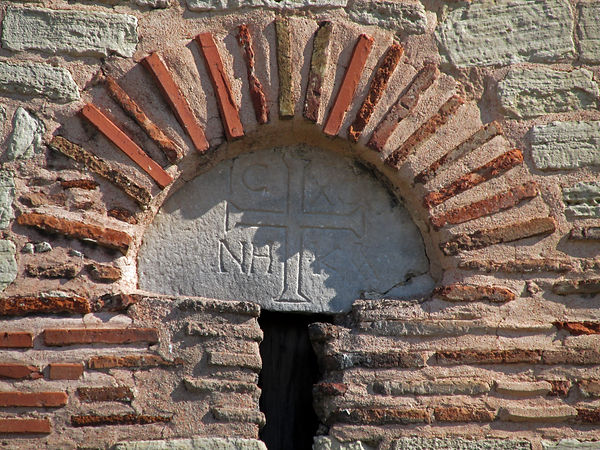

%20on%20To.jpg)
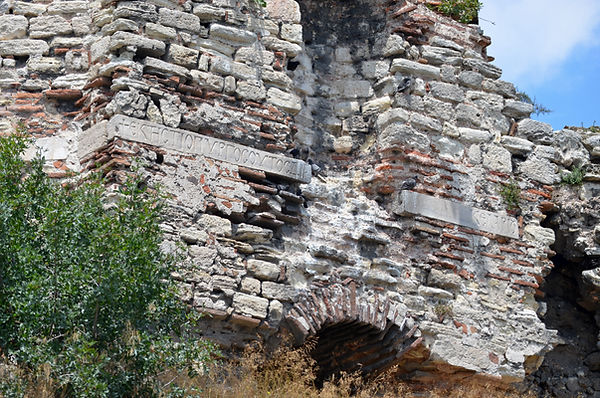

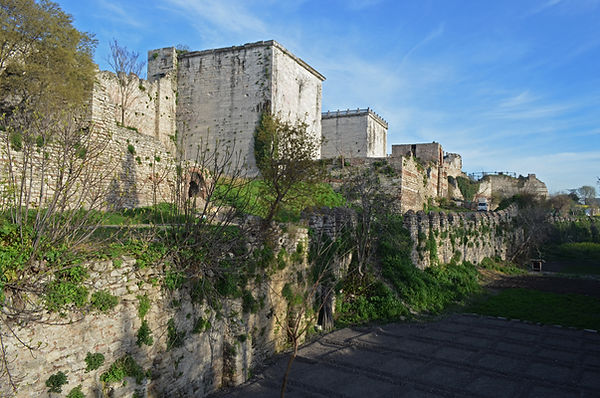






.jpg)
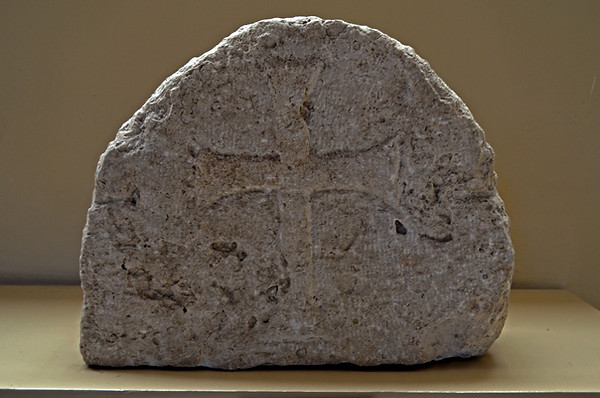




.jpg)

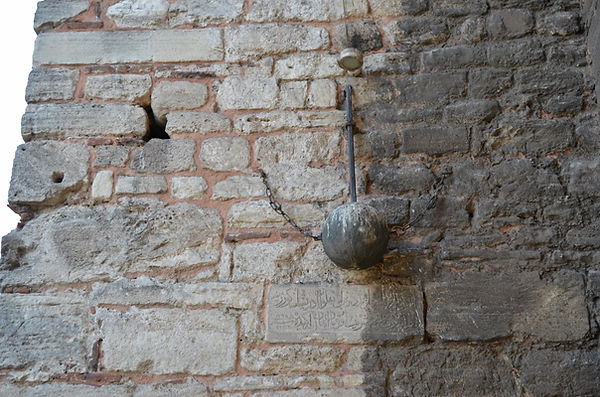
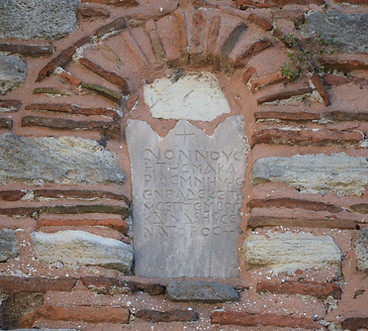













%20and%20Const.jpg)


%20and%20Const.jpg)

















.jpg)




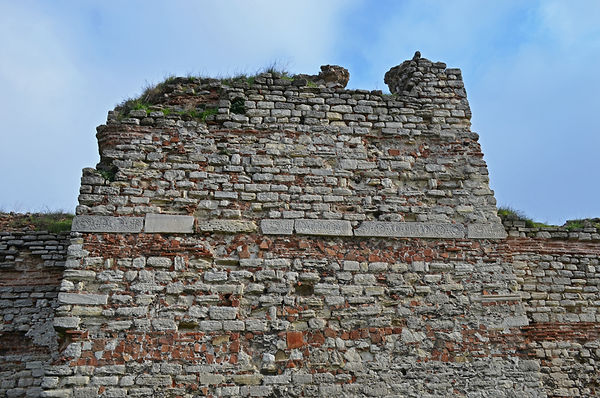






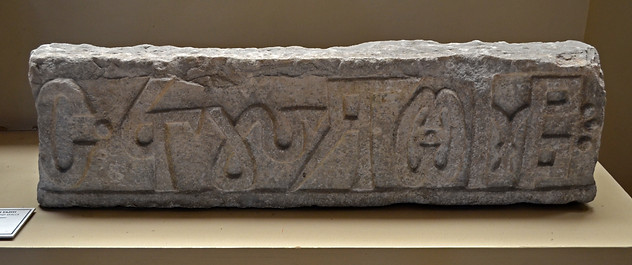





.jpg)







